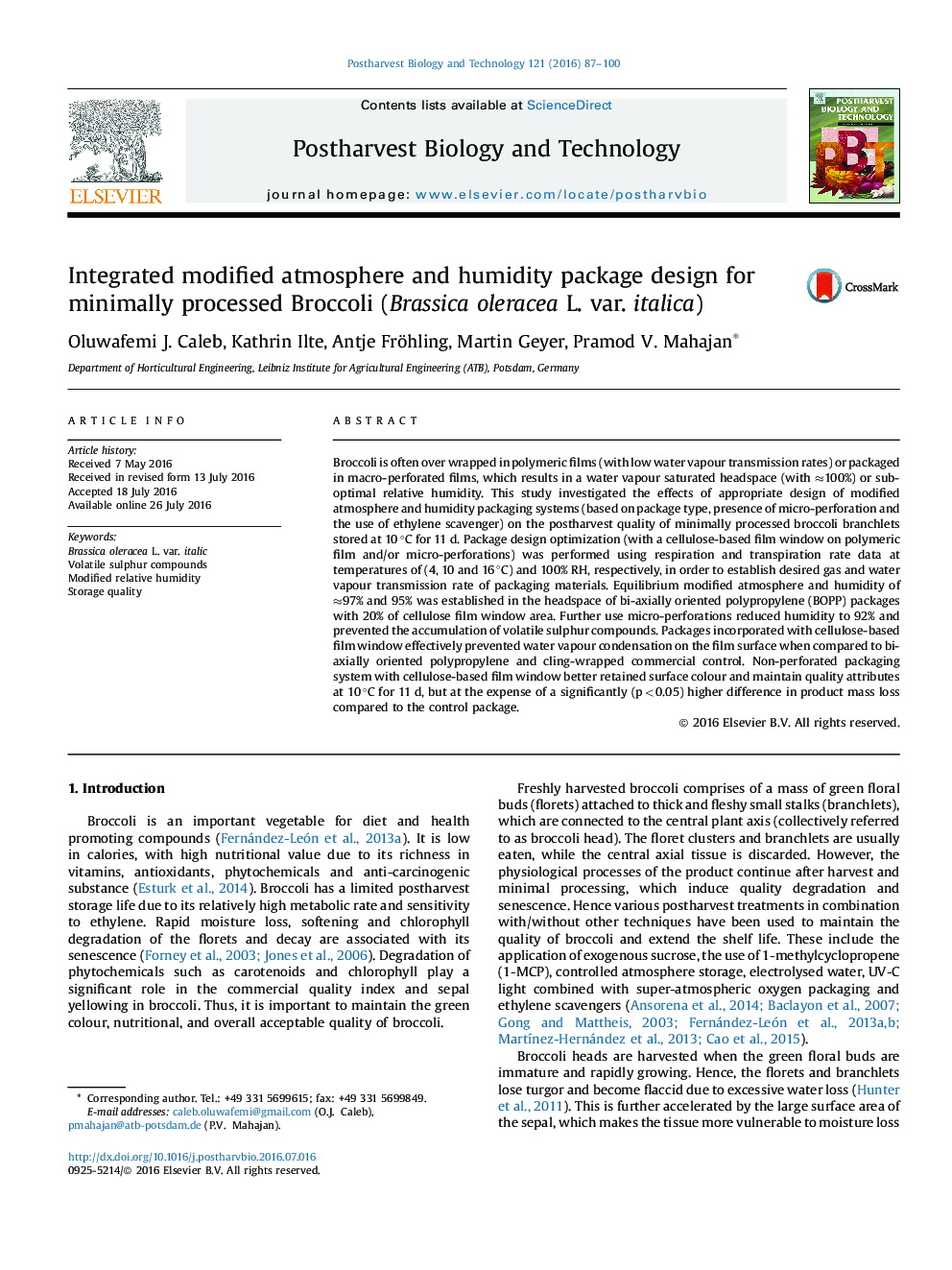| Article ID | Journal | Published Year | Pages | File Type |
|---|---|---|---|---|
| 4517693 | Postharvest Biology and Technology | 2016 | 14 Pages |
•Packages with fixed cellulose-based film adequately regulated in-package humidity.•Packages with cellulose-based film effectively prevented water vapour condensation.•A cellulose-based film window had significant impact on headspace gas composition.•Micro-perforation alone was not sufficient to prevent water vapour condensation.
Broccoli is often over wrapped in polymeric films (with low water vapour transmission rates) or packaged in macro-perforated films, which results in a water vapour saturated headspace (with ≈100%) or sub-optimal relative humidity. This study investigated the effects of appropriate design of modified atmosphere and humidity packaging systems (based on package type, presence of micro-perforation and the use of ethylene scavenger) on the postharvest quality of minimally processed broccoli branchlets stored at 10 °C for 11 d. Package design optimization (with a cellulose-based film window on polymeric film and/or micro-perforations) was performed using respiration and transpiration rate data at temperatures of (4, 10 and 16 °C) and 100% RH, respectively, in order to establish desired gas and water vapour transmission rate of packaging materials. Equilibrium modified atmosphere and humidity of ≈97% and 95% was established in the headspace of bi-axially oriented polypropylene (BOPP) packages with 20% of cellulose film window area. Further use micro-perforations reduced humidity to 92% and prevented the accumulation of volatile sulphur compounds. Packages incorporated with cellulose-based film window effectively prevented water vapour condensation on the film surface when compared to bi-axially oriented polypropylene and cling-wrapped commercial control. Non-perforated packaging system with cellulose-based film window better retained surface colour and maintain quality attributes at 10 °C for 11 d, but at the expense of a significantly (p < 0.05) higher difference in product mass loss compared to the control package.
